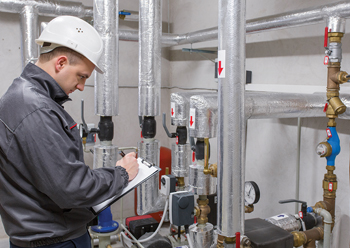Nuuka offers AI route to self-optimised systems
01 February 2022
Transforming a manual heating, ventilation and air-conditioning (HVAC) system to a self-optimised one is now possible in weeks, thanks to artificial intelligence, says Nuuka, a Finnish building software company focusing on AI for building automation systems and HVAC.
While many real estate investors consider using modern software solutions, like AI, to enhance their existing manual HVAC systems, drawn to AI-managed HVAC systems due to the massive economic and sustainability benefits, they are afraid it is a major, time-consuming, non-scalable project. This, however, has now proven not to be true, the company emphasises.
Controlling and optimising HVAC systems in commercial and public buildings has historically been time-consuming manual work. Sometimes, the HVAC systems’ manual processes have been expedited with the help of a Scada (supervisory control and data acquisition) system or on-site system. Nevertheless, it has become a real challenge to keep up with the rapid increase and development of systems and sensors in buildings over the last decades. Further, building owners face increased demand for flexible space usage, safe indoor conditions, and substantially reduced energy consumption and carbon dioxide (CO2) emissions.
“The number of processes, measurement points, and data in BMS and HVAC systems that need attention has exploded in the last decade. As a result, traditional maintenance organisations that use manual processes find it impossible to manage HVAC systems properly,” says Mikko Maja, Chief Technology Officer at Nuuka.
Facility managers must meet the demand for reduced energy and CO2 emissions without jeopardising the health of buildings and tenants. As a result, machine learning or AI is increasingly being applied to optimise existing building HVAC and energy systems, he says.
The benefits of using AI are massive both from an economic and sustainability perspective, Maja stresses. AI learns the building’s usage and continuously predicts and adjusts the HVAC operating system in real-time.
“Using AI, buildings have reduced energy consumption and CO2 emissions by up to 30 per cent on average while simultaneously maintaining a healthy indoor climate inside the premises. Despite the strong results, the implementation of AI in existing commercial and public buildings has lagged. One reason could be the industry’s expectation that the process will be long, complicated, and resource-demanding,” he adds.
“To meet our customers’ demand, we have developed an AI solution that can diagnose and optimise their buildings’ HVAC in no time,” says Maja. “Thanks to our long history in developing software solutions for HVAC and our compatibility to all existing building HVAC and energy systems, we have managed to make AI adoption quick. For most customers, the effective implementation time is six to eight weeks.”
The implementation of Nuuka’s AI solution in an existing building is a three-stage process. First, Nuuka connects the building BMS system to the cloud and starts collecting the data. Secondly, Nuuka’s software starts diagnosing the building’s HVAC systems performance to detect faults and gives suggestions for correcting them before introducing AI software to the building. The last phase involves the deployment of AI-based optimisation to the HVAC system.
“We are very proud of the possibilities this brings to the real estate industry. Finally, real estate owners have tools that upgrade existing commercial and public buildings to be AI optimised future buildings,” he remarks.
Nuuka says it offers AI and diagnostics software solutions to operate building systems and HVAC remotely and automatically, while cutting costs and greenhouse emissions.
“We have used our extensive experience from monitoring over 1,000 HVAC processes during the past years, and turned that experience into a wide set of algorithms and intelligence to identify the root cause of any potential malfunction or problem – and if a process or a device needs maintenance.
“This fully autonomous and automated diagnostics will speed up fault detection, make it easier to repair faults immediately. Diagnostics will also help to cover systems and services 24x7 instead of sporadic, intermittent inspections. Diagnostics will help move away from unnecessary preventive maintenance to proactive maintenance, where real-time data is used to identify faulty devices, no matter the size or complexity,” Maja concludes.
- SFI pioneers UL certified ventilators
- Smart pumps get to the heart of the matter
- Nuuka offers AI route to self-optimised systems



